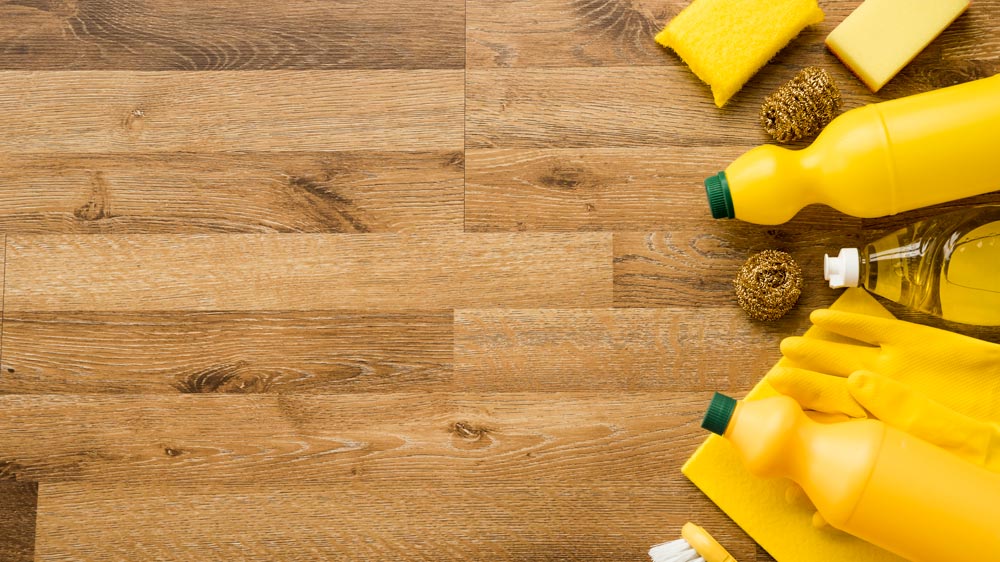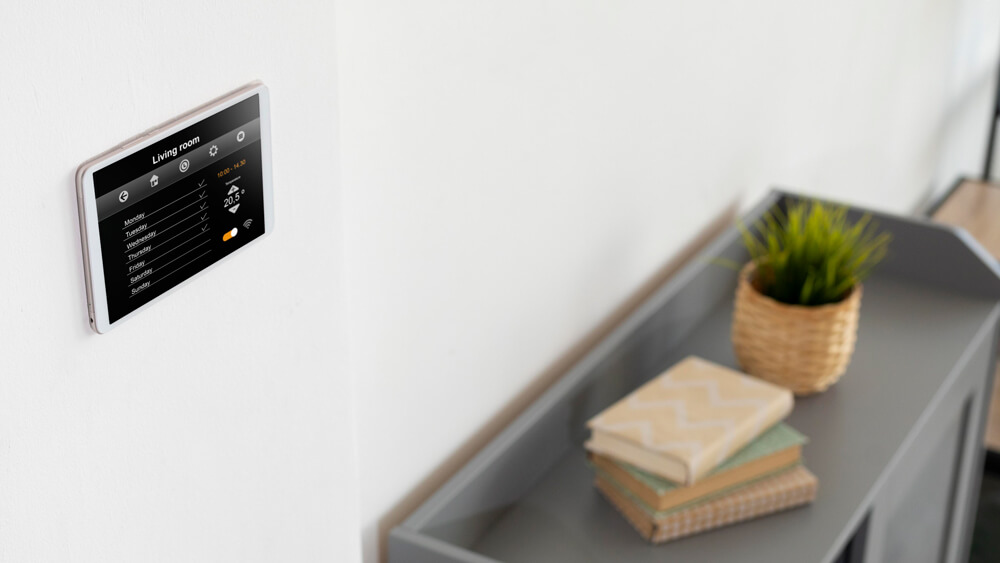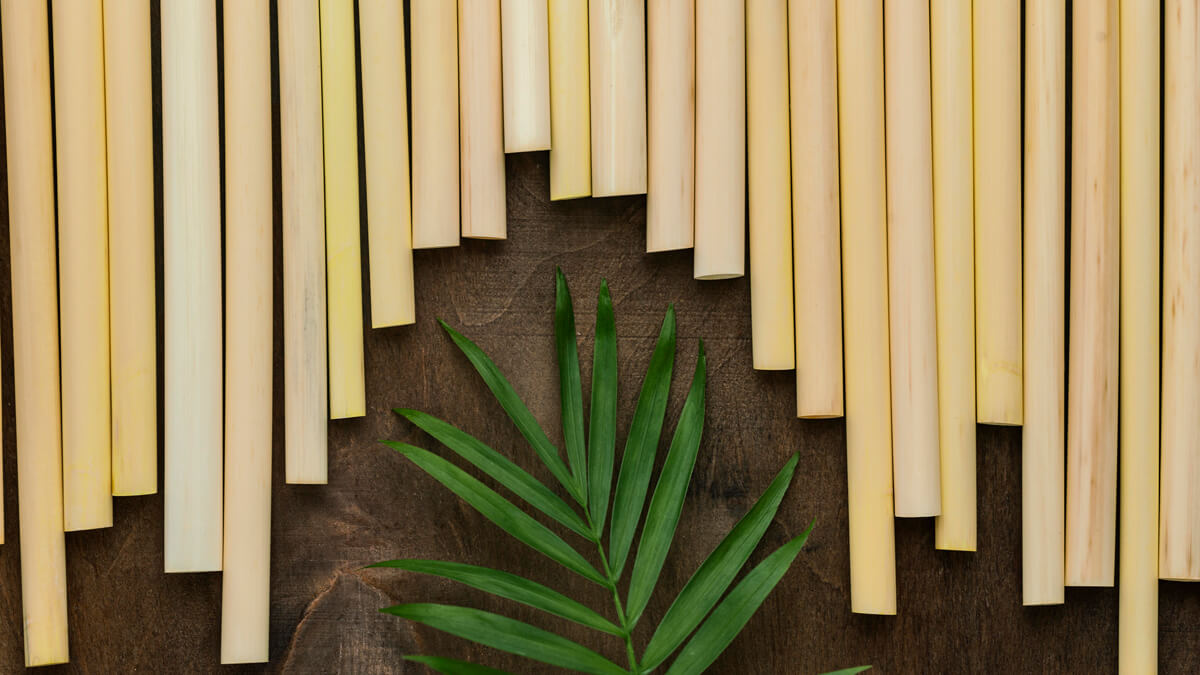Bamboo flooring is a type of flooring manufactured from the bamboo plant. It’s most commonly known worldwide for its durability, and sustainability, and has different styles. Bamboo flooring is known as the symbol of natural beauty in some countries. Its distinctive grain pattern adds an established finish to any room. It is great for owners looking for a long-lasting, environmentally friendly alternative to traditional hardwood floors. A fun fact about bamboo flooring is that it can be used in both low and high-traffic areas. However, if you decide to go for bamboo flooring installation or even you have it, it is crucial to know about bamboo flooring maintenance to avoid any damages and lengthen its lifespan. In this article, you will learn more about rules and tips of bamboo flooring maintenance and cleaning.
Using rugs and furniture pads on bamboo flooring
Likewise to other types of flooring; it is important to pick up items rather than dragging them on the bamboo flooring. As this will easily create scratches. It’s recommended to use your rugs or mats in the places where furniture exists. Furniture pads are also an amazing and underrated item that should be in every household. As heavy furniture and tools will cause plenty of wear and tear, having a simple pad will distribute the weight and prevent damage.
Sweeping or vacuuming bamboo flooring regularly
True that bamboo flooring requires low maintenance, it is essential to preserve the natural beauty of bamboo flooring by doing a regular sweep and vacuuming. Sweep your bamboo flooring once a day using a soft broom. For vacuuming the flooring, try to use the soft attachment of the vacuum to prevent every tiny scratch that may be caused by the vacuum.

Mopping bamboo flooring regularly
Depending on the type of bamboo you purchase; the cleaning routine will differ. In some variations, it may adjust every five days, or somewhere it’s a week. For regular cleaning scenarios; a simple microfiber mop found should not only suffice but is great at picking up dirt, dust, and debris without leaving excess moisture. Despite there being tools designed for this; a simple dry cloth should be enough to wipe off excess dew off the ground, which as stated previously is crucial to have proper care.
💡Avoid using a steam mop as the moisture and heat of the machine can damage the bamboo flooring over time.
Immediately removing stains and scratches from bamboo flooring
In case of spills on the bamboo flooring surface, try to clean them immediately after discovering them, because the moisture can easily penetrate the bamboo flooring texture and it can cause long-term damage to the flooring. You can use a soft piece of cloth to wipe spills. If the stains are thicker and harder like grease stains, you can use proper bamboo flooring cleaning products to remove hard stains. For tiny scratches that may happen normally on every flooring including bamboo flooring, you can use a bamboo floor repair kit or a wood repair marker or to fill and hide in the scratches. If the scratches are deeper and cannot be repaired by home advice, it is better to consult flooring professionals and ask them to make repairs and refinish the bamboo flooring.
Using the right cleaning products on bamboo flooring
Using abrasive materials and cleaning products such as ammonia, bleach, or vinegar on bamboo flooring can not only damage its finish but also shorten its overall lifespan. Try to find cleaning materials that are specifically designed for bamboo flooring or wooden surfaces. The cleaning products with a neutral pH that is safe for cleaning bamboo flooring surfaces. In some cases, a mixture of water and dish soap can also be a good idea to clean bamboo surfaces. However, keep in mind that you should not overuse it and after each time using the water and soap mixture, the surface must be mopped with a dry cloth immediately to avoid humid absorption.

Controlling humidity in different seasons
Proper humidity control is important to ensure that warps, cracks, and virtually any large issue get fixed before it happen on the bamboo flooring. Year-round the average should be around 40-60% humidity, during winter and harsh climates; consider purchasing a humidifier to prevent shrinkage. The same goes for steamy climates; where it is recommended to purchase a dehumidifier to decrease excess moisture; and prevent expansion and warp. It is also advised to use curtains to avoid the sunlight during sunny seasons which can cause bamboo flooring discoloration.

Long-term care and refinishing of bamboo flooring
To keep your bamboo flooring the same as the first day after the installation, besides all the maintenance tips that have been already mentioned, you need to have a refinish procedure depending on the traffic volume of the area every few years. This can help to have fresh and wear-free bamboo flooring without any need to replace them. To refinish the bamboo flooring, you need to consult flooring experts as some of the bamboo types such as strand-woven may require specific refinishing techniques.
Conclusion
Maintaining bamboo flooring requires can be easily done by considering some maintenance tips like regular daily vacuuming or sweeping, immediate stains and spills cleaning, using bamboo-friendly cleaning products, and controlling area humidity. By following the simple rules and sticking to them, you can lengthen your bamboo flooring lifespan without making any repairs or replacements while keeping their look stunning and fresh like the first day.

